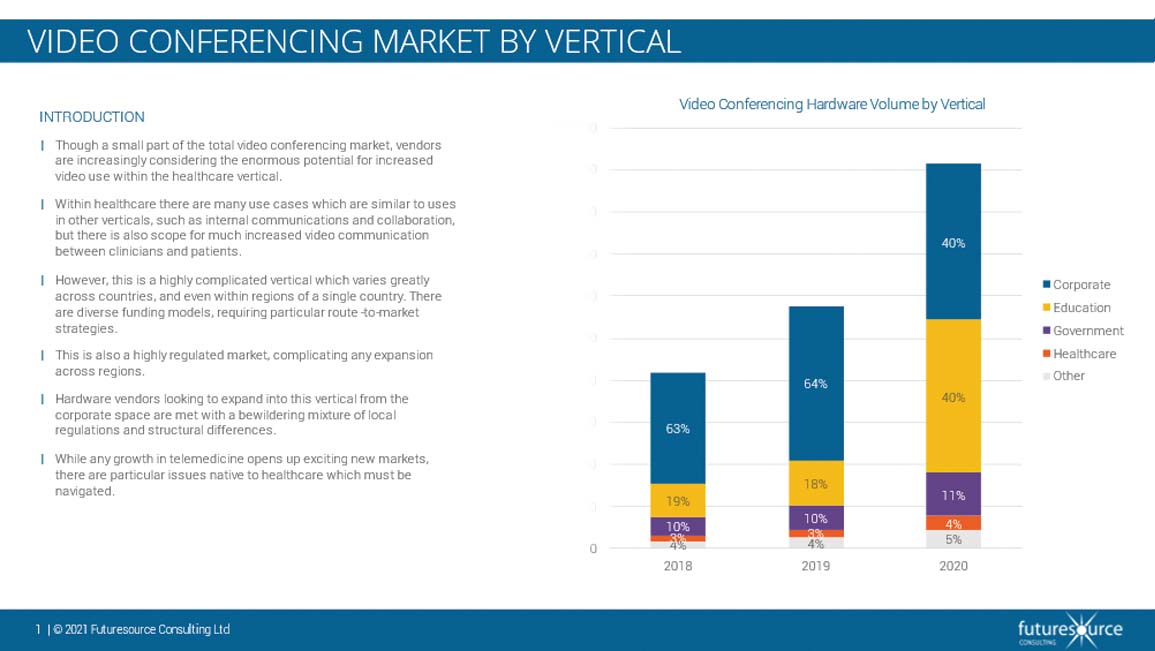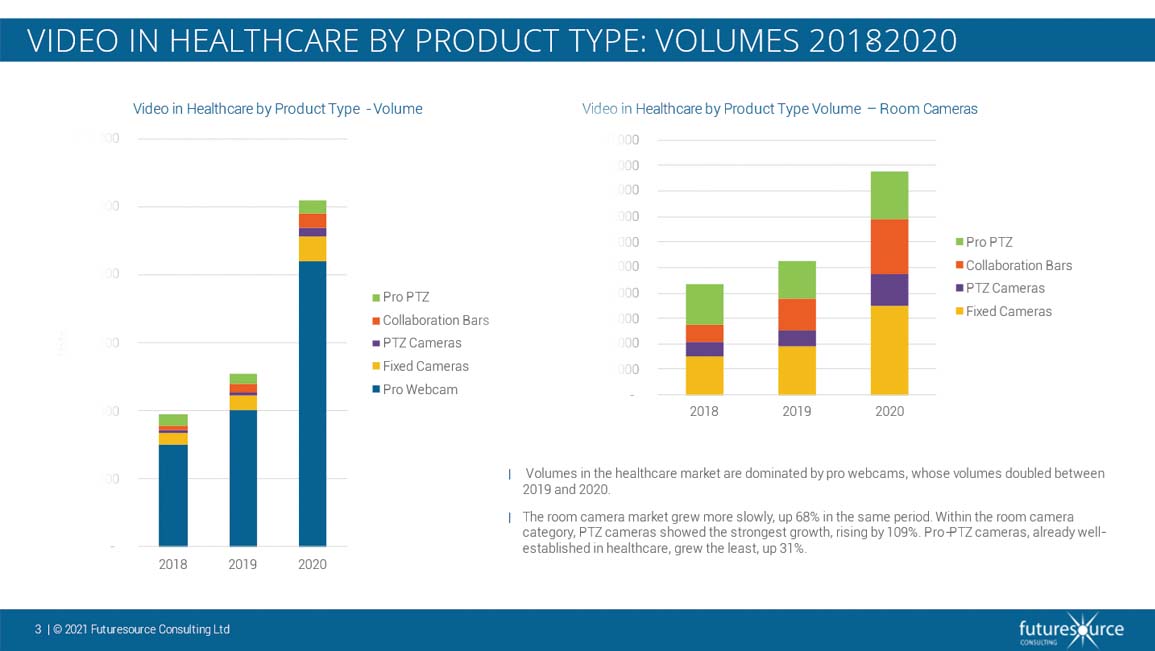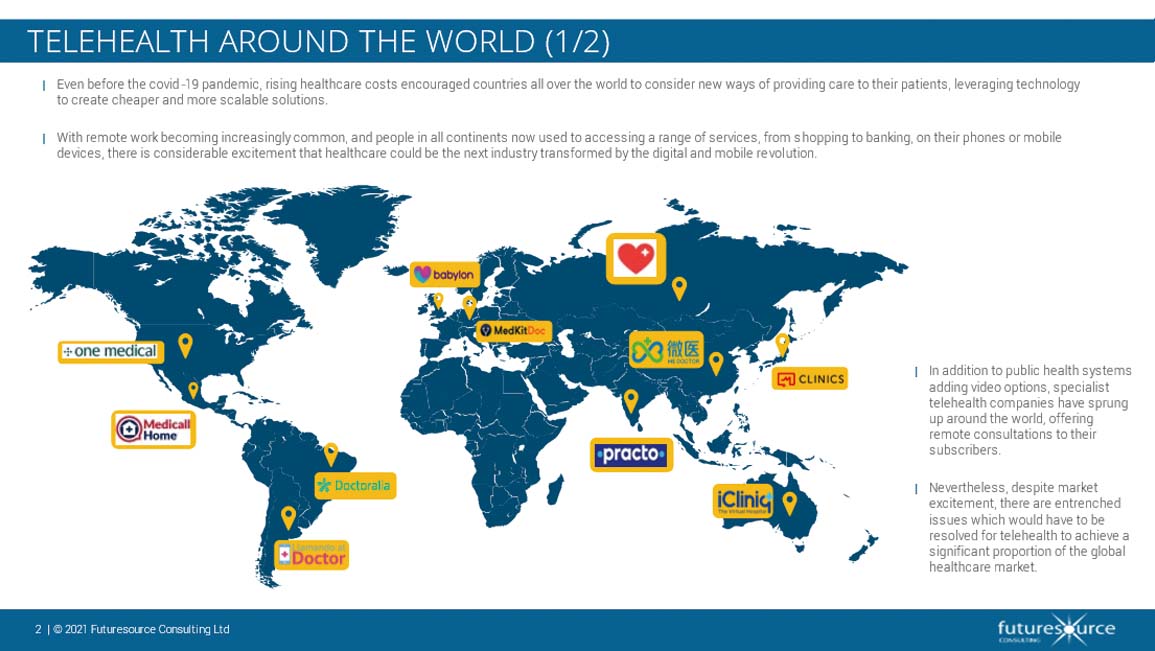The value of the healthcare-based video conferencing market is on track to more than double between 2020 and 2025, according to a new market profile report from Futuresource Consulting. The specialist research firm cites healthcare providers looking to leverage technology as a key driver behind this growth.
“The healthcare industry is exploring new delivery models to offer better care to more people at a lower cost,” says Alistair Johnston, Head of Collaboration at Futuresource Consulting. “Even before the COVID-19 pandemic, healthcare systems were under strain. They were facing rising costs due to ageing populations, a higher incidence of chronic health conditions and a global shortage of clinicians. Now, collaborative tech has pervaded our lives and proved its worth, and many in the healthcare sector are ready to make the leap.”

An Array of use Cases, but Regulatory Differences are a Sticking Point
There is a wide range of use cases for video, including telemedicine, collaboration between clinicians and improving the quality of communication between non-clinical staff. Yet, in a complex, highly-regulated market not only do requirements vary across regions, but there are also regulatory variations at an intra-country level. Decentralised nations, such as the United States, can have different requirements from state to state, while other systems, such as the UK’s NHS, are more uniform in their arrangements.
Among the product categories, Futuresource expects collaboration bars to grow the most, forecasting a CAGR of 41% between 2020 and 2025. This is primarily due to adoption by the administrative functions within healthcare.

North America Leading the charge, APAC Behind the Curve
“When we take a world view, North America is pushing ahead on the adoption curve,” says Johnston. “High healthcare costs and a greater willingness to integrate video are driving the market forward there, and there is less resistance to establishing new models of healthcare delivery.
“Within EMEA, we’re seeing the use of video in healthcare following wider video trends. It’s most popular in the Nordics, Netherlands, UK and then France. Many of the differences are cultural rather than led by budgets. For example, there’s less remote working in Southern Europe, and healthcare systems are mainly run regionally, rather than on a national level. For APAC, we expect volume growth to remain relatively low, with much of the video investment driven by the more developed markets of Australia, Japan and South Korea.”



